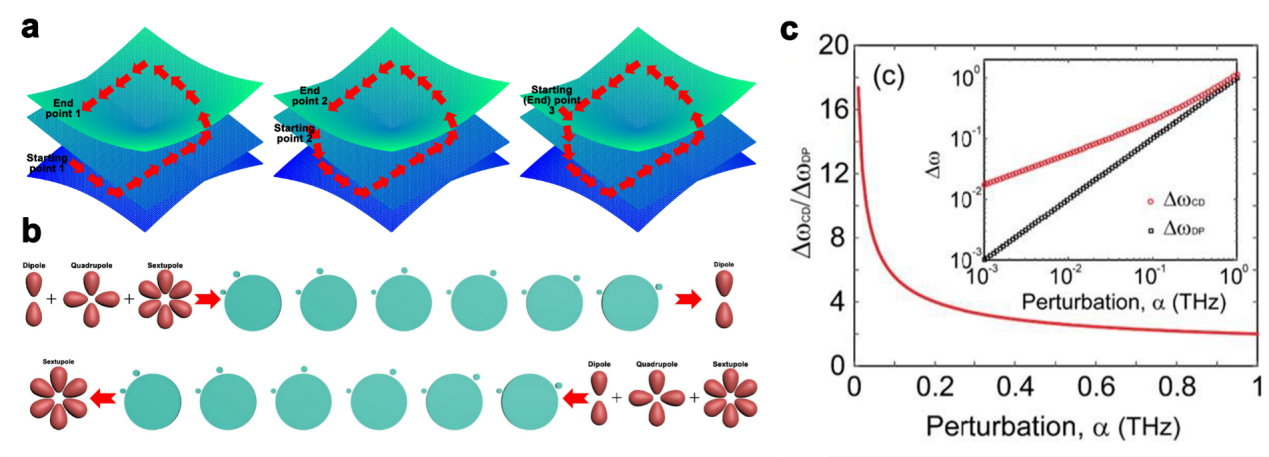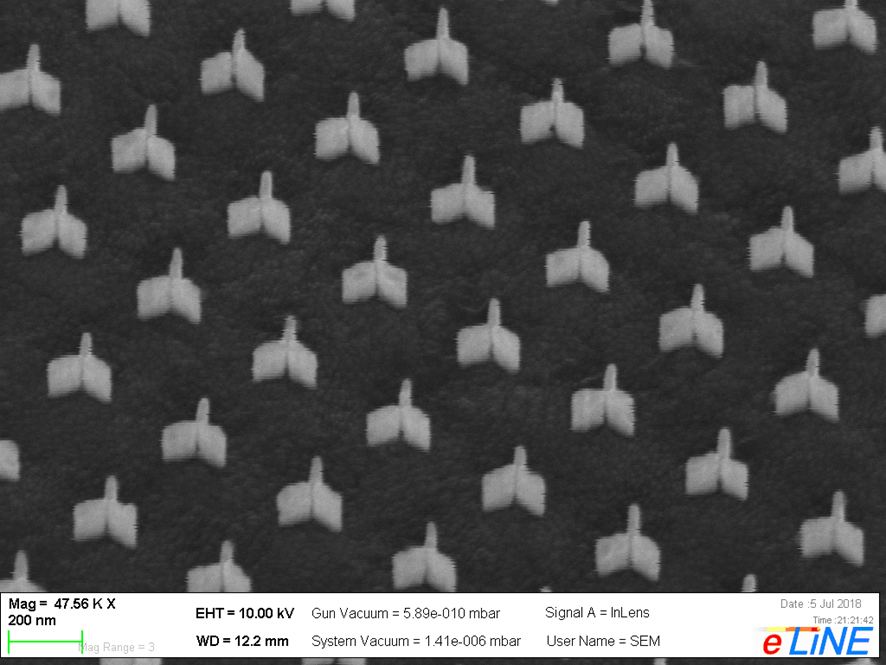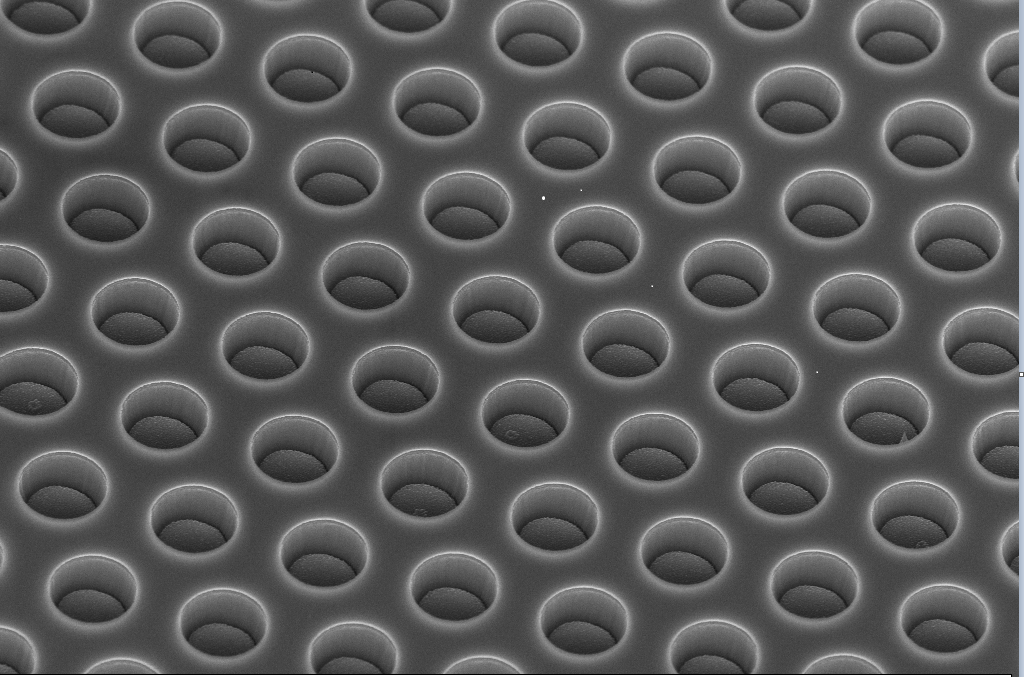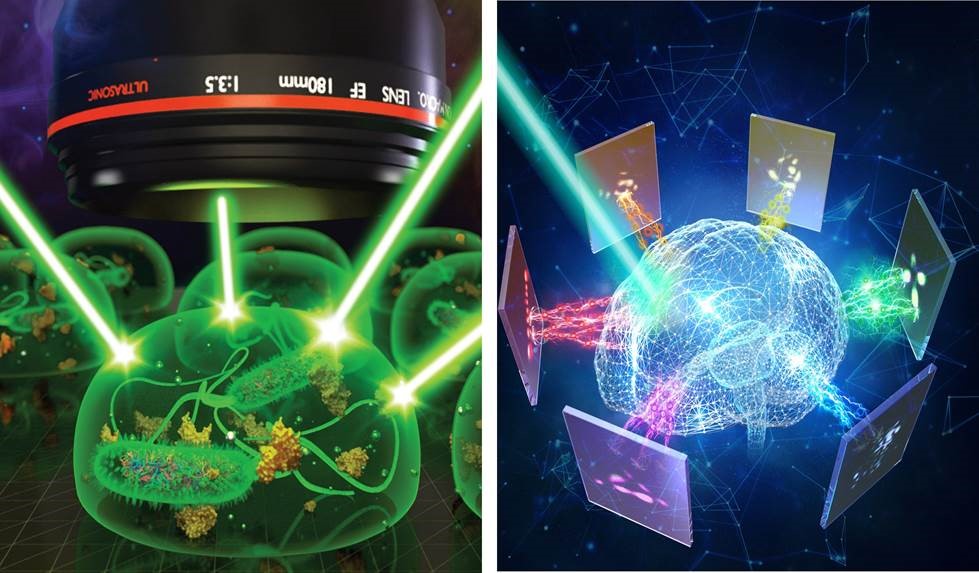A new generation of photonic materials and devices is the basis of advanced development of photonic applications. We focus on advanced research, discovery, design and development in novel photonic materials in both organic and inorganic materials, nano-material structures, silicon photonics and novel photonic devices for various applications in next generation communications, defence, green energy, bio-medicine and more.

High quality laser ceramics developed at NTU

Graphene nanostructure array for high-performance optoelectronic devices
Quantum & topological photonics
Program Director: Assoc. Prof. Luo Yu
The global photonics market is expected to reach US$846.2 billion by the end of 2025, driven mainly by active devices. Cutting-edge active photonic devices can play a major role in Singapore’s vision of building a Smart Nation, such as through the wide deployment of low-cost but robust sensors for monitoring air quality, compact transmitters and receivers used for Internet of Things (IoT) appliances, etc. Current design strategies for photonic devices involve manipulating a few degrees of freedom (DOF) such as frequency, polarization, and phase. These DOFs are continuous variables, and therefore susceptible to perturbations occurring in active devices. For instance, lasers are prone to frequency shifts arising from fabrication imperfections, mechanical deformation, or temperature changes, and arrays of lasers are prone to losing phase coherence, limiting their ability to emit in a single optical mode at high powers.
Topology is a newly-discovered discrete DOF whose relevance to physical systems has sparked a conceptual revolution in physics. In condensed matter physics, the discovery of new “topological” phases of quantum matter was recognized by the award of the 2016 Nobel Prize in Physics. A topological quantity is resistant to change, but once it changes, it changes abruptly. The proposed research programme aims to systematically exploit topological DOFs to design improved on-chip active photonic devices, overcoming traditional limitations tied to reliance on continuous DOFs. This research program explores device applications over almost the entire electromagnetic spectrum: terahertz (THz), mid-infrared (mid-IR), visible, and ultraviolet (UV). Our targets include lasers with unprecedented levels of robustness, and detectors with unprecedented sensitivity. These advances will be achieved through the adoption of novel design principles exploiting the robustness of topological phenomena to enable low device cost (due to tolerance against fabrication errors), resistance to environmental perturbations, and enhanced sensitivity (by working near transition points where topological quantities undergo abrupt changes). Ultimately, the technology developed under this program will be incorporated into next-generation photonics products, such as lidar for autonomous navigation and chemical sensors for food processing, which are highly relevant for Singapore’s advanced manufacturing ecosystem.

Figure 1
(a) Mode competition in the recently-developed topological laser. Top: SEM image of the laser and the simulated field intensity distribution of a typical mode. Bottom: Experimental results showing that only a few modes lase at a time, with mode-hopping as the pump current is increased (blue, red, and purple curves). (b) SEM images of a photonic spin Hall lattice previously been developed for quantum optical waveguiding, another good platform for studying mode competition in topological lasers. (c) Recent results from the literature showing that machine learning can perform “inverse design” of photonic structures that match an arbitrarily-chosen target scattering or transmission spectrum.

Figure 2
(a) The celebrated Haldane model. (b) A valley-polarized chiral edge state in a 2D bulk gap. (c) In 3D magnetic topological insulator, spin-momentum-locked surface states are gapped, with a chiral edge state in the gap.

Figure 3: Topology, mode switching and sensitivity enhancement of high-order EPs.
Non-adiabatic properties of a higher-order EP shown by encircling it in the counter-clockwise direction. (b) Schematic of asymmetric mode switching. (c) Numerical simulation shows that a designer surface plasmonic sensor based higher order EP can obtain sensitivity enhancement more than 16 times compared to a conventional sensor.
Metamaterials/Metasurfaces
Program Director: Prof. Zhang Dao Hua
Over the last decades, metamaterials have caught the attention of the scientific community, in particular with the eventual realization of superlens to break diffraction limits for near-field imaging and flat optics, intrinsically flat and wavelength thick optical components with arbitrarily controlled functionalities. These new artificial materials can find various applications such as sensing, spectroscopy, imaging, free space communications, defence, etc. They feature significant advantages, particularly in reducing the size of optical devices, in decreasing their cost compared to traditional expensive mid-infrared optical materials, and in their unprecedented capabilities to achieve new design and new functionalities. As a particular example of the metamaterial technology, metasurfaces rely on scattering properties of ultrathin subwavelength scale optical resonators patterned at interfaces to control radiation, which include the control of polarization, phase, amplitude, and dispersion of light. It has been deployed widely for applications including, but not limited to, wavefront control, lightweight imaging systems, displays, electronic consumer products, and conformable and wearable optics. However, the metasurface studies have focused mainly in the visible and near-infrared region.
This research program is to design and demonstrate artificial metamaterial and metasurface structures for controlling light from microwave all the way to visible frequencies. We aim to address several key issues, raised by leading local companies, who have manifested strong interests in manufacturing meta optics for imaging applications. This research will not only provide a supplement to modern theory of electromagnetic waves particularly catered for flat optics, but also open a new pathway to address challenging problems of achieving new optical devices in free-form substrates. Breaking through traditional constrains of refractive optics, this program will stimulate new industrial interests in the local community of Singapore. Last but not least, resolving thermal dissipation issues in electronics could have huge industrial impact. Going beyond traditional optical elements and diffractive elements, this program will achieve highly efficient artificially controllable optical interfaces in desired manners, for wavefront control, imaging and thermal management applications




Biophotonics
Joint Programme Director: Assoc Prof. Liu Linbo
Biophotonics is a rapid-growing field which integrates new technology in optical sciences and biomedical engineering. The mission of the program lies in two aspects: (1) To develop novel biophotonic devices at the micro to nano scale for biomedical optical sensing. The next generation technologies we focus include but not limited to handheld OCT imaging devices, biological lasers on chip, nano-laser biochips, fiber-optical sensor, and ultrasensitive photonic sensors for single molecule detection in cancer and neurological diseases (DNA, protein, virus). (2) To develop new optical imaging tools which can improve human health, from fundamental science to clinical applications. This includes ultrafast laser emission microscopy, nano-lasers for neuron stimulation and imaging, OCT imaging for skin care/cancer, and super resolution microscopy. Besides, our program aims to integrate artificial intelligence with the above-mentioned biophotonic sensors and imaging tools to meet the biggest clinical and scientific needs. Biophotonics is a highly innovative and interdisciplinary area which promises a plethora of opportunities and welcomes expertise from all fields to work together.

